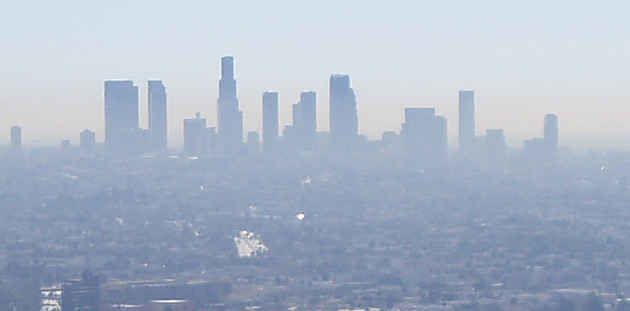Los Angeles' infamous smog problems made it the frontline in a successful war on tailpipe emissions, but even a full switch to electric cars may not completely eliminate air pollution in the city, a new UC Berkeley study suggests.
With vehicle emissions declining, plants are emerging as the major source of particulate hydrocarbon emissions—known as PM2.5—in the LA metropolitan area, according to the study. PM2.5 emissions consist of small particles that can easily lodge in the lungs, and have been linked to cardiovascular and respiratory diseases, researchers noted.

2019 Hyundai Kona Electric - First Drive - Hollywood, CA
UC Berkeley scientists found that concentrations of PM2.5 in the LA basin in 2012 were half what they were in 1999. Tailpipe emissions of new cars decreased during that period thanks to stricter regulations, which brought other sources of PM2.5 to the fore.
The LA basin contains more than 18 million trees and, on average, they're now responsible for about 25% of the area's particulate emissions. That means President Ronald Reagan was partially correct when he infamously stated in 1981 that "trees cause more pollution than automobiles do," a release accompanying the study said, but it doesn't mean trees are bad.
"I am not suggesting that we get rid of plants, but I want people who are thinking about large-scale planting to pick the right trees," Ronald Cohen, an atmospheric chemist and UC Berkeley professor of chemistry, said in a statement. "They should pick low-emitting trees instead of high-emitting trees."

2021 Volvo XC40 Recharge P8 - Los Angeles reveal, October 2019
Particulate emissions from trees can also combine with human-produced nitrogen oxides to form aerosols, especially when it gets hot. That's a significant issue in sunny California, so Cohen recommended continuing to study which plants produced lower emissions in order to control the formation of aerosols. He also hopes to study other urban areas, including the San Francisco Bay Area, to see if vegetation has contributed to emissions at the same level as it has in LA.
Still, aerosols from vegetation-based particulate emissions is a largely temperature-specific issue, which is a major improvement over the days of higher tailpipe emissions, Cohen said.
"Twenty years ago, just about every day in LA was in violation of a health-based standard," he said. "And now it is only the hot days."

Los Angeles Smog
Burning fossil fuels also produces other toxic substances that likely aren't present in particulate matter from trees. Plus, trees absorb carbon dioxide and release oxygen into the atmosphere.
As California moves to end sales of new gasoline cars and commercial trucks (and pushing the federal government to do the same), though, other sources of pollution will become more visible. Recent forest fires, the coronavirus pandemic, and some technology in new cars has helped us all become more aware of PM2.5 in as they directly affect our lives.












